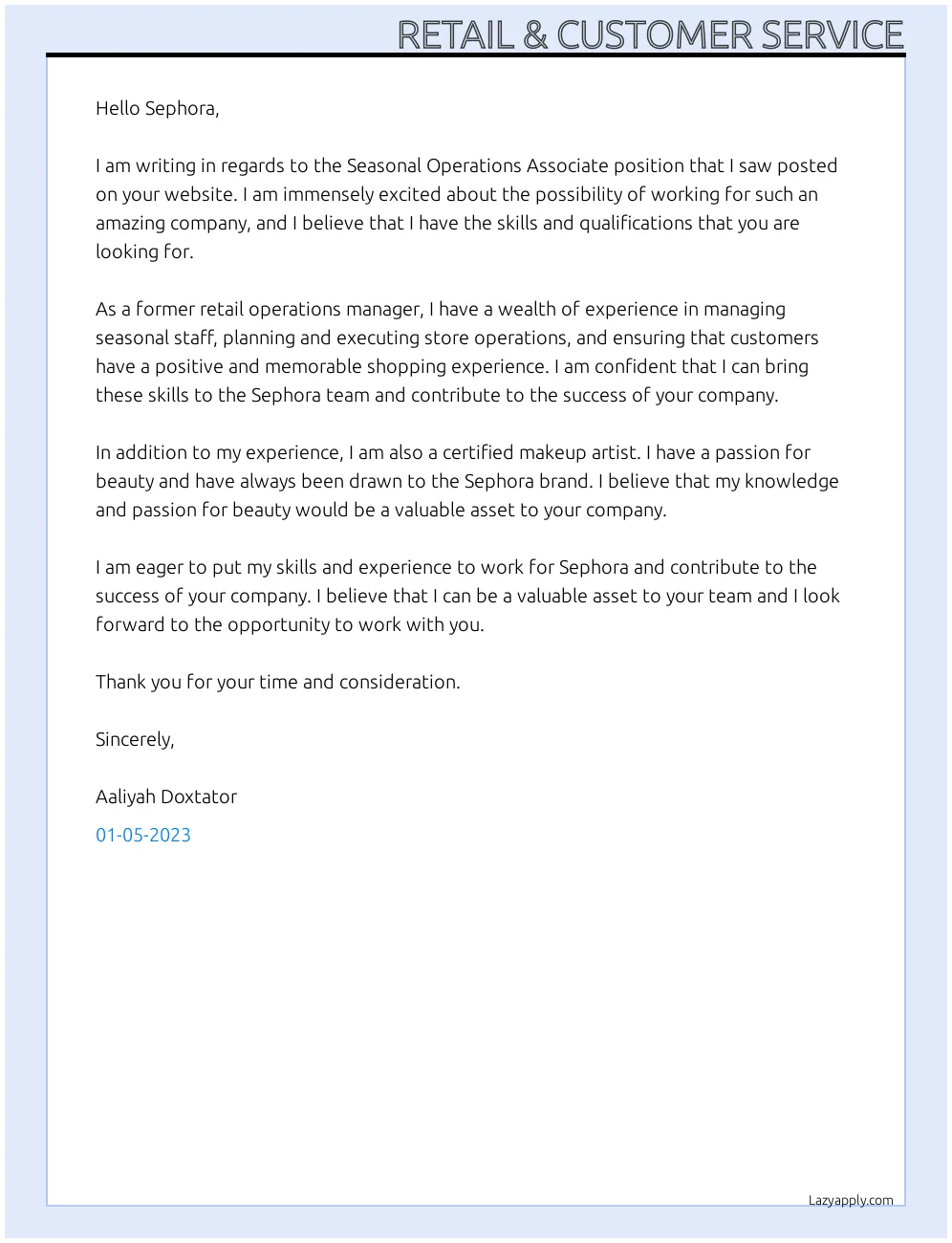Why a Customer Service Cover Letter Matters
In the competitive world of retail customer service, a well-crafted cover letter is your first impression. It’s your chance to go beyond the resume and showcase your personality, passion, and unique qualifications. A cover letter demonstrates your genuine interest in the role and the company, setting you apart from applicants who only submit a resume. It allows you to tell a story, highlighting your experiences and skills in a way that a resume, with its concise bullet points, often cannot. Furthermore, a cover letter provides an opportunity to address specific requirements or address any potential gaps in your resume, giving you an edge in securing an interview. By taking the time to write a thoughtful cover letter, you communicate professionalism, attention to detail, and your commitment to providing exceptional customer service.
Understanding the Retail Customer Service Role
Before you start writing, understand what the retail customer service role entails. It involves assisting customers with inquiries, resolving issues, processing transactions, and ensuring a positive shopping experience. Customer service representatives act as the face of the company, so excellent communication and interpersonal skills are essential. They must be patient, empathetic, and able to handle complaints with grace. A strong understanding of the products or services offered, as well as the company’s policies and procedures, is also critical. Successful retail customer service representatives are problem-solvers who can remain calm under pressure, think on their feet, and consistently exceed customer expectations. Knowing the key responsibilities and expectations will help you tailor your cover letter and highlight relevant skills and experiences.
Essential Skills for Customer Service in Retail
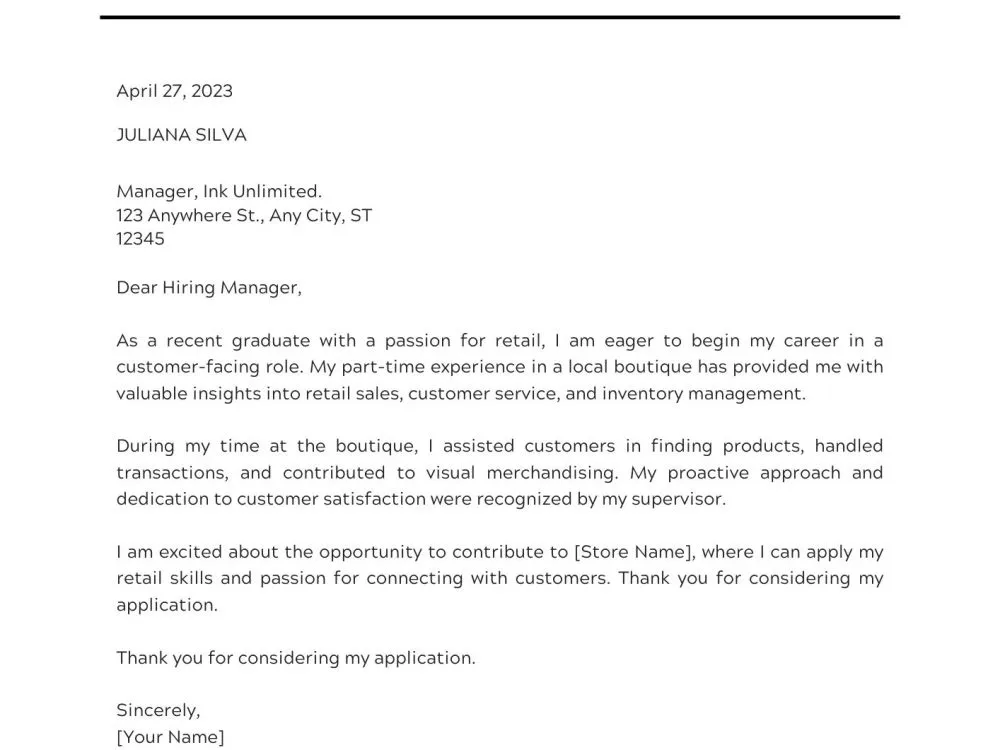
Customer service in retail demands a diverse set of skills to thrive. First and foremost, effective communication is key; this includes active listening, clear and concise verbal communication, and professional written correspondence. Problem-solving is another core skill, as representatives must quickly and efficiently address customer issues. Patience and empathy are crucial for handling difficult situations, as well as the ability to remain calm and composed. Strong organizational skills are necessary to manage multiple tasks and prioritize customer needs. A positive attitude and a genuine desire to help customers are equally important, as is the ability to work effectively within a team. Finally, adaptability and the willingness to learn new products, services, and systems are essential for success in the dynamic retail environment. Highlighting these abilities on your cover letter is a great way to attract the employer.
Highlighting Your Relevant Experience
When crafting your cover letter, focus on experiences that demonstrate your customer service skills. If you’ve worked in retail, highlight your interactions with customers, problem-solving abilities, and sales achievements. For those with experience outside of retail, emphasize transferable skills like communication, conflict resolution, and teamwork. Provide specific examples of situations where you went above and beyond to assist a customer or resolve an issue. Quantify your achievements whenever possible, such as increasing sales, improving customer satisfaction scores, or reducing complaint resolution times. If you’ve received positive feedback from customers or managers, be sure to include that as well. By providing concrete examples and quantifiable results, you can effectively demonstrate your value to the prospective employer. Tailor the highlighted experience to the job description to ensure you meet the requirements.
Formatting Your Cover Letter
Your cover letter’s formatting is just as important as its content. It should be clean, professional, and easy to read. Use a standard font like Times New Roman, Arial, or Calibri, with a font size between 11 and 12 points. Maintain consistent spacing throughout the letter, using single-spacing within paragraphs and double-spacing between them. Start with your contact information, the date, and the hiring manager’s contact information. Address the hiring manager by name if possible, and use a professional salutation like “Dear Mr./Ms. [Last Name].” Divide your letter into clear paragraphs, each focusing on a specific point. Keep your paragraphs concise, aiming for no more than five sentences per paragraph. Proofread carefully for any errors in grammar or spelling. A well-formatted cover letter demonstrates attention to detail and professionalism, increasing your chances of making a positive impression.
Writing a Compelling Opening
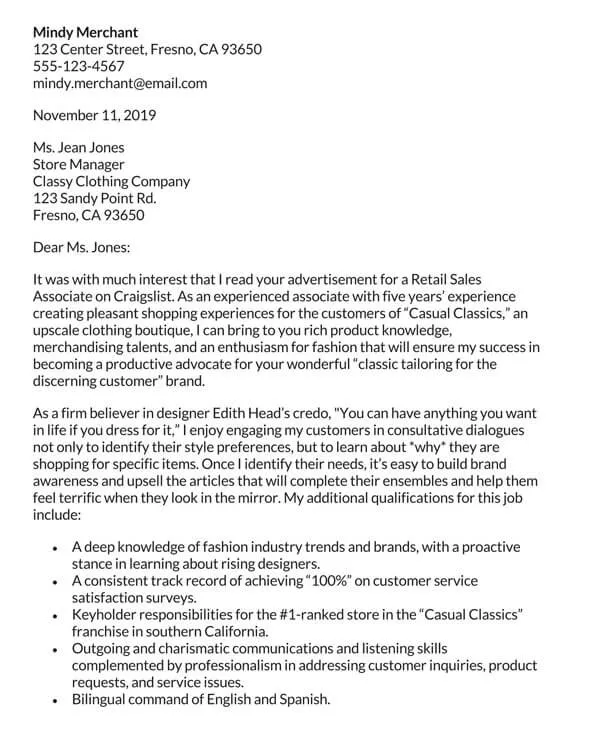
The opening paragraph of your cover letter is your first chance to grab the reader’s attention. Start with a strong hook that highlights your enthusiasm for the position and the company. Clearly state the position you are applying for and how you learned about it. Briefly mention your key qualifications or accomplishments that align with the job requirements. Avoid generic openings like “I am writing to express my interest.” Instead, try something more engaging, such as “With my passion for customer service and proven ability to exceed expectations, I am eager to apply for the Customer Service Representative position at [Company Name].” Show your interest in the specific company, mentioning something that drew you to the company. The goal is to immediately capture the reader’s attention and encourage them to continue reading. A well-crafted opening sets the tone for the rest of your letter and encourages the hiring manager to learn more about you.
Showcasing Your Skills and Accomplishments
The body of your cover letter is where you showcase your relevant skills and accomplishments. Focus on the skills and experiences that match the job description’s requirements. Provide specific examples to demonstrate how you have used these skills in previous roles. Instead of simply listing your skills, use the STAR method (Situation, Task, Action, Result) to tell a story about your experience. Describe the situation, the task you were assigned, the actions you took, and the positive result you achieved. For instance, instead of writing “Resolved customer complaints,” you could write, “In a challenging situation, I resolved a customer complaint about a faulty product by listening attentively, offering a full refund, and providing a replacement, resulting in a satisfied customer and a positive review.” Tailor your letter to match the specific requirements and showcase your accomplishments and abilities.
Quantifying Your Achievements
Whenever possible, quantify your achievements to make your accomplishments more impactful. Use numbers and data to demonstrate your contributions and the value you brought to previous employers. For example, instead of saying “Improved customer satisfaction,” write “Improved customer satisfaction scores by 15% through proactive problem-solving and follow-up communication.” If you increased sales, specify the percentage or dollar amount. If you reduced the number of customer complaints, provide the relevant figures. Quantifiable achievements provide concrete evidence of your skills and abilities, making your cover letter more compelling and persuasive. They demonstrate your ability to achieve results and add value to the company. By including numbers and statistics, you show the hiring manager the real impact you’ve had in past roles.
Tailoring Your Letter to the Job
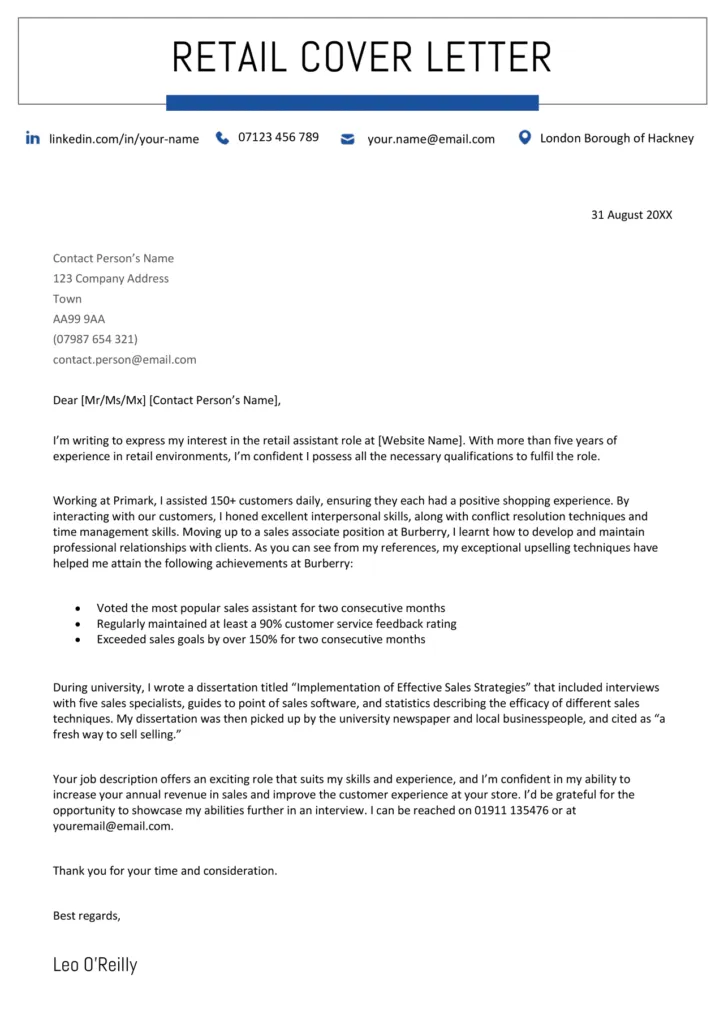
Customize your cover letter for each job application. Generic cover letters are easily recognizable, and they do not show the hiring manager that you have tailored the letter to meet their needs. Carefully review the job description and identify the key skills, experience, and qualifications the employer is looking for. Use these keywords and phrases in your cover letter to demonstrate that you meet their requirements. Address the specific needs of the company and the role. Research the company to understand its values, mission, and culture. Mention any relevant information you have learned about the company or its products. Customizing your letter shows that you are truly interested in the specific opportunity and that you have taken the time to understand the role and the company. This personalization helps you stand out from the crowd.
Proofreading and Editing Your Cover Letter
Before submitting your cover letter, proofread and edit it carefully. Errors in grammar, spelling, and punctuation can create a negative impression and undermine your credibility. Read your letter slowly, paying attention to every detail. Use a grammar and spell-checking tool, but don’t rely on it completely. Often, these tools may not catch all of the errors. Ask a friend, family member, or career counselor to review your letter for you. They can offer a fresh perspective and catch any mistakes you might have missed. Ensure the formatting is consistent, the language is professional, and the tone is appropriate for the role. A polished and error-free cover letter demonstrates your attention to detail and professionalism. It shows the hiring manager that you take pride in your work. Taking the time to proofread and edit your cover letter is a crucial step in making a positive first impression.
Common Mistakes to Avoid
Avoid common mistakes that can hurt your chances of getting an interview. Do not submit a generic cover letter that could be sent to any employer. Avoid typos and grammatical errors at all costs. Do not use slang or informal language. Avoid being overly wordy or repetitive. Do not focus solely on your needs; instead, emphasize how you can benefit the company. Do not include negative information about previous employers or experiences. Avoid exaggerating your skills or experience. Do not include irrelevant information that does not relate to the job requirements. By avoiding these common pitfalls, you can make sure your cover letter presents you in the best possible light and increases your chances of getting hired.
Crafting a Strong Closing
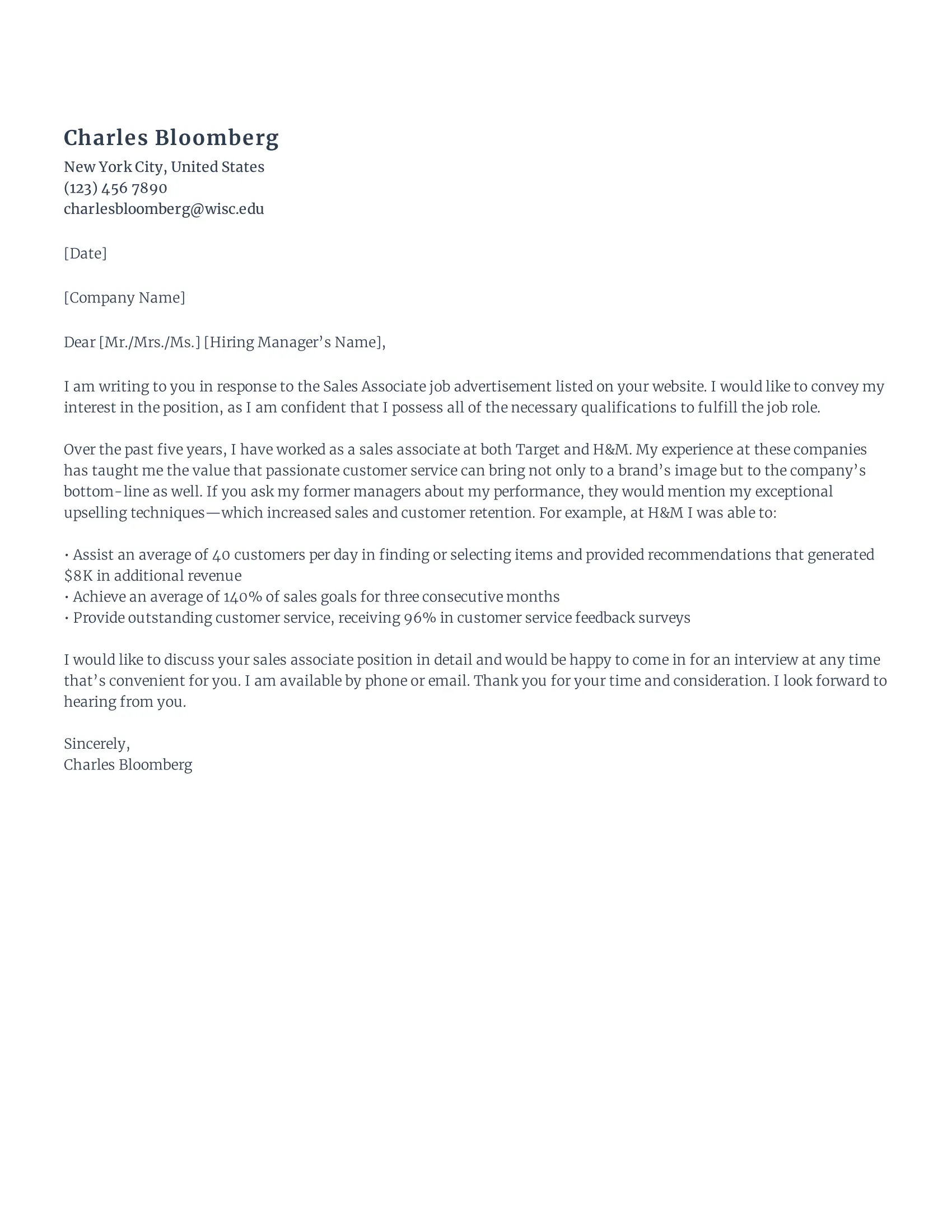
Your closing paragraph should reinforce your interest in the position and encourage the hiring manager to contact you. Thank the hiring manager for their time and consideration. Reiterate your enthusiasm for the opportunity and your belief that you are a strong fit for the role. Express your willingness to discuss your qualifications further and provide any additional information they may need. Include a call to action, such as “I look forward to hearing from you soon” or “I am available for an interview at your earliest convenience.” Provide your contact information again, including your phone number and email address. A well-crafted closing leaves a lasting positive impression and makes it easy for the hiring manager to take the next step. A strong closing paragraph shows professionalism.
Following Up After Submission
After submitting your cover letter and resume, follow up with the hiring manager to express your continued interest and inquire about the status of your application. Send a brief, polite email or make a phone call approximately one week after submitting your application. In your follow-up, thank the hiring manager for their time, reiterate your interest in the position, and briefly mention a key qualification or accomplishment. Ask if they require any additional information or if they have any questions. Keep your follow-up concise and professional. Avoid being overly persistent or pushy. A timely follow-up demonstrates your enthusiasm for the opportunity and your commitment to the hiring process. It can also help you stay top of mind with the hiring manager.
